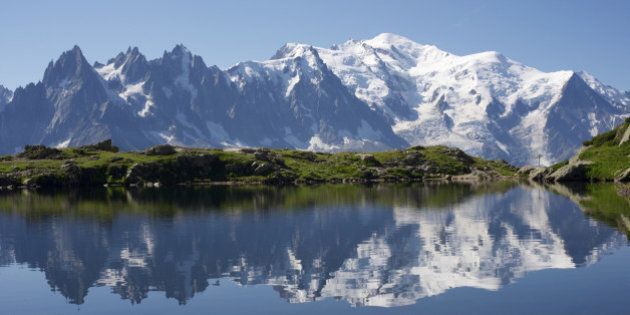
The aesthetics of mountains is a large part of their appeal for visitors, and spring is a time when people come to mountains to enjoy the abundance and beauty of mountain flora. A main difference between Canadian and European mountains is the so-called "mosaic" landscape.
The aesthetic of the mosaic landscape is created by agricultural ecosystems such as pastures (brimming with flowers), vineyards and orchards, contrasting with wild forest and sublime summits. This may be a chocolate box image but it's more than a pretty picture.
In fact it is a living representation of thousands of years of human interaction with mountains. Studies have shown these landscapes have tremendous significance from an environmental, cultural, historic, economic and social point of view.
Plus this aesthetic is money in the bank for tourism. Indeed the Alps have between 60 to 80 million visitors each year, and the EU Centre for Climate Adaption estimates this generates upward of Euro 50 billion annually.
Why then is the mosaic landscape rapidly being lost in Europe's mountains? The terraced agricultural fields so iconic for the Mediterranean landscape are disappearing. Germany, Switzerland, Norway, and Sweden are all experiencing a sharp decline in cultivated permanent grasslands.
Should we let this living history disappear -- particularly when it also is responsible for habitats of high biodiversity? Mountain mosaic landscapes are often EU Habitats Directive sites, and home to rare and endemic vegetation and animals. Also they help regulate ecosystem services we depend on.
Lifestyle changes and economic pressures mean abandonment is generally the future these places face. High altitude pastures and their diverse flowering plants start to disappear through disuse.
In parts of the Alps and in the Italian Apennine mountains there is another destructive force: the invasive grass Brachypodium genuense, which demonstrates outstanding competitiveness in abandoned pastures.
While visitors are enjoying these mountains and their remaining mosaic landscapes, few will notice they tread upon an unseen battle ground where this invasive grass is driving out endemic flowering plants, lowering soil temperature and pH levels, and sharply reducing biodiversity. It is not ski-friendly either because in winter the blades of grass dry flat on the earth, generally in the direction of the downward slope. This acts like a slippery mat, separating layers of snow from the ground, facilitating avalanches. It can't even be used as fodder because animals dislike the taste of it.
Luckily for those who love mountains, researchers are looking for solutions.
The Monti Sibillini National Park, collaborating with University of Camerino, is conducting a project experimenting with preserving mountain meadows in five sites. Two of these focus on combatting Brachypodium genuense. Since domestic animals are averse to this grass these sites are initially mown, and local people are given incentives to help maintain sheep and horses in these locations. For more info.
The study results, to be published in 2017, will be a significant step toward preserving the beauty and health of mountains in Europe.
(photo credit: S. Fioravanti, 2014)
MORE ON HUFFPOST:
